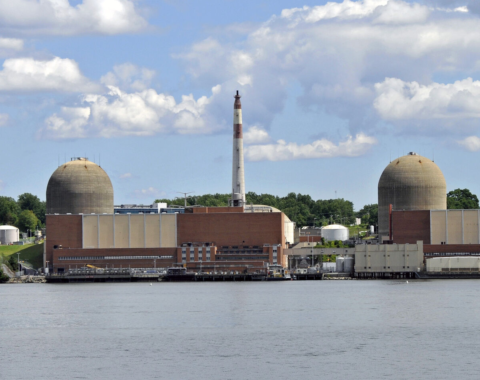Although recent news from the financial world indicates over half of the operating U.S. nuclear plants are losing money for a collective loss of roughly $2.9 billion per year, these 99 operating units provide reliable, efficient, and relatively low cost electricity. In fact, they provide ~20% of the electricity we use. To put things in perspective it would take ~1,875 other power plant operating units to provide the same equivalent 20%.
In addition, these nuclear power plants have a small physical footprint and their electricity is provided with zero carbon gas emissions. Its benefits have even won over anti-nuclear activists like former Environmental Protection Agency Administrator Carol Browner.
Based on all the benefits that U.S. nuclear power plants have provided over the past 60 years, the federal government needs to be willing to do what it takes to regulate this industry appropriately, and then let it succeed or fail on its own merits
Listed below are some things that the Trump Administration and Congress could do to help, without any government handout.
- Eliminate all the energy subsides. Federal tax credits for wind and solar have been particularly destructive to energy markets by distorting electricity prices and energy infrastructure investments. Did you know that the wind industry got roughly $34 per megawatt hour in federal subsidies during fiscal year 2013, and the solar industry got roughly $667 per megawatt hour, according to a recent study conducted by the University of Texas-Austin.
- Encourage states to abandon renewable portfolio standards. States have done damage to their own electricity markets with renewable electricity mandates. It makes no sense to center electricity markets around politically privileged resources rather than qualities like how to get the most reliable, affordable, efficient energy to the customer.
- Correct EPA radiation exposure standards. The EPA has for decades mischaracterized the risk posed by very low levels of radiation, which are far lower than justified by a growing body of science, experience, and empirical data. Rightsizing radiation exposure standards would reduce cost drivers in the nuclear industry and inform the public.
- Review foreign ownership caps. Vague standards by the Nuclear Regulatory Commission on foreign investment have halted nuclear power projects in places like Texas and Maryland. It’s hard to see why the U.S. wouldn’t want investment from foreign companies like those in France, which is a longtime ally and an industry leader committed to nonproliferation; as long as they can meet the US NRC standards.
- Address over- regulation. Over-regulation from the Nuclear Regulatory Commission and the EPA has put U.S. companies and utilities at a disadvantage. A study by the American Action Forum puts the annual paperwork costs at $4.2 million per power plant.
- Improve the culture of Nuclear Regulatory Commission. It takes too long for the commission to process actions that improve nuclear power plants, let alone build new ones. Despite the recent increase in staff and resources, the commission has not become more efficient.
- Reform Nuclear Regulatory Commission fee cost recovery structure. Outside of the nuclear industry, no other electricity provider is required to pay for the budget of its regulator. This quasi-business arrangement does not lead to transparency or incentivize the efficient use of resources; it has become a barrier to entry for new companies.



